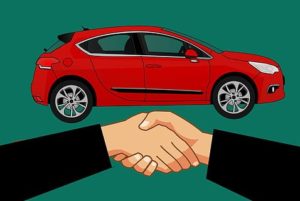According to renowned research centers and organizations, COVID-19 is here to stay. The masks and other life-hindering restrictions are not going away (for a long, long time).
Thus, it is now necessary to adapt to the new normal for both individuals and businesses. Or else, survival and success both would become values well out of reach.
Here’s a look at the automotive industry’s struggle in navigating its way through the new normal.

Understanding the Scenario
Similar to all the other aspects of life, the COVID-19 has brought a significant impact on the automotive industry too. However, a logical examination of the situation is important to unravel the maximum extent of the impact.
Real-time data analysis from the Company Frost and Sullivan reflects upon two possible scenarios, which include Severe Pandemic and Global Emergency. Although the titles appear synonymous, both differ in terms of consequences that vary from recovery to decline.
The Severe Pandemic situation proposes a partial vehicle production that may put the manufacturers into a loss. Also, it prevents the automaker from utilizing its full capacity. However, it will be temporary, and the automotive industry will resume full production by August. Consequently, there will be a gradual recovery by 2023.
On the contrary, the Global Emergency involves constant slow production. The company loss, coupled with increasing unemployment as well as automotive demands, will impose a recessionary environment. The automotive industry will not be able to recover until 2024-25.
Nevertheless, considering the prevailing conditions, the Severe Pandemic scenario appears to be the most likely one. Undeniably, the automotive industry has suffered from halted productions, social distancing, fewer demands for aftermarket parts, and much more. However, the industry has figured out the new normal too.

The New Normal
For the masses, the most prominent changes in the way of living include social distancing, lockdowns, and augmented hygiene practices. People are isolating themselves, avoiding interactions, and ensuring safety protocols.
However, for the automotive industry, the changes include increased usage of e-commerce and digitalized methods. With lockdowns, customers can no longer visit the vehicle dealers and retailers. Thus, the industry has to depend on e-commerce as a primary means of operation.
Moreover, the pandemic has discouraged many buyers from investing in the automotive sector because they cannot get test drives and examine the products. Hence, there is a rising demand for more digitalized methods, from communication to contactless deliveries.
Unfortunately, the new normal for the automotive industry has no set frame, and it is continually shifting with the prevailing situations. However, the authoritative entities have taken specific initiatives to deal with the new normal.

Adapting to the Changes
Adapting to the new normal, the automotive industry not only needs to take measures for its clientele, but companies also should continue to cultivate thriving relationships with partners and employees.
For achieving this, most car manufacturing, car selling, as well as car shipping companies, felt the need to come up with multiple strategies according to changes over time. The following are some of the adaptive measures taken by several automotive companies to operate with the new normal.
Short-Term
To begin with, many car dealers have adopted regular SOP practices. Abiding by the lockdown enforcements in several regions, showrooms have closed down. And digital car sales and purchases are in full swing.
Selling cars online avoids physical contact and also makes continuous disinfection of vehicles possible. Furthermore, dealers are now offering financial flexibility with money-back and complete-exchange guarantees as well as low to zero-interest loans.
We observe the establishment of quick response teams and proper safety protocols. Most automakers are also temporarily shifting their manufacturing focus towards medical equipment such as ventilators. Consequently, we soon expect to see newer car models featuring anti-COVID technology, such as better air filter systems and convenient vehicle disinfection.
Long-Term
Long-term ( i.e., in a span of 1-2 years or more from now) automakers will see themselves adapting completely to digital showrooms. Consumer online shopping for everything, including vehicles, will be the norm. To thrive in this marketplace, car dealers will need to make the change to digital selling to avoid a devastating impact on sales in case of a possible future crisis.
From selection to delivery, car shippers and dealers plan to conduct the journey of buying and transporting a car entirely online. To boost sales via online platforms, automakers will soon be investing substantial sums on digital marketing with promising sales campaigns and promotions.
The spread of COVID-19 has shifted the way of living upside down. Our once socially-active world has to depend on anti-social practices for survival. However, the situation won’t be permanent. Every day our world is learning to fight against the virus and adapt for better operations. Similarly, despite the initial shock, the automotive industry will also come back stronger and healthier. Till then, we must continue to navigate and decipher the solutions.
Shawn Mack is a content writer who offers ghostwriting, copy-writing, and blogging services. His educational background in business and technical field has given him a broad base from which to approach many topics. He occasionally writes articles for US Junkyards Near Me.






